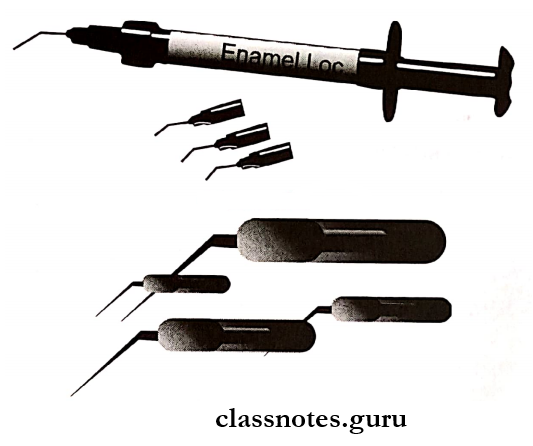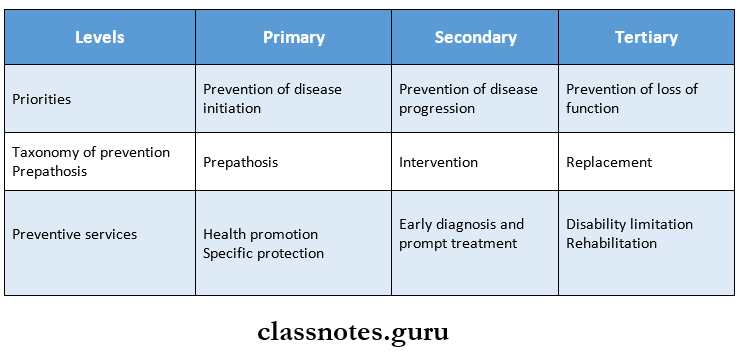Preventive Approach To Caries Control Important Notes
1. Sugar substitutes

2. Functions of resin tags
- Retention
- Caries protection
- Prevention of bacterial colonization
Read And Learn More: Pedodontics Short Essays Question And Answers
3. Procedure for sealant application
- Isolation
- Tooth preparation
- Acid etching
- Washing and drying
- Application of bonding agent
- Application of sealant
- Curing
4. Requisites of efficient sealant
- Low viscosity
- Adequate working time
- Resistance to wear
- Good adhesion to enamel
- Cariostatic
- Minimum irritation to tissues
5. Classification of pit and fissure sealants
- Based on polymerization
- Self-activation
- Light activation
- Resin systems
- BIS-GMA
- Urethane. acrylate
- Clear or tinted
Preventive Approach To Caries Control Short Essays
Question 1. Diet Counselling.
Answer:
Diet Counselling Steps:
- Introduce diet diary
- 24-hour diet record is prepared
- A six days diet diary is advised
- Analyse complete records
- Isolating the sugar factors
- Patients education
- Consumption of sugar substitutes
Diet Counselling Visits:
- First appointment:
- A diet diary of 6 consecutive days is prepared
- Form of particular food taken, its approximate amount along with snacks, candies, syrups, chewing gums consumption is recorded
- Identify the sugar-containing food items
- Mark such items with red Xs while others with blue Xs
- Explain to the patient the harmful effects of sugar-containing substances and explain to decrease the red Xs items while increasing blue Xs items
- Teach him as a game
- Suggest the sugar substitute like peanuts, walnuts

- Recall Visits:
- Recall appointments are carried out at regular intervals during the next months
- During these visits evaluate the patient’s progress and provide reinforcement
Question 2. Pit and Fissure Sealants.
Answer:
They are defined as whereby pits and fissures that occur principally on the occlusal surfaces of the molar and premolar teeth are occluded by the application of fluid materials, which are then polymerized.
Pit and Fissure Sealants Classification:
1. Based on polymerization:
- Self-activation
- Light activation
2. Resin systems:
- BIS-GMA
- Urethane acrylate
3. Clear or tinted:
Ideal Properties:
- Early flowable into the deep pit and fissures
- Easy and quick to apply and cure:
- Should result in prolonged adhesion to enamel
- Must have cariostatic properties
- Must be non-irritant
- Should have wear resistance property
Pit and Fissure Sealants Indications:
- Children of less than 4 years of age
- Newly erupted teeth
- Stained pit and fissures
Pit and Fissure Sealants Contraindications:
- Low caries risk patients
- Wide pit and fissures
- Partially erupted teeth
Pit and Fissure Sealants Applications:
- Clean the tooth surfaces
- Wash and dry the selected teeth
- Etch the tooth with 37% Phosphoric acid for 15 sec.
- Wash off with water for 30 seconds
- Air-dry it to obtain a frosted appearance
- Re-etch if required
- Apply the sealant
- Cure it
Agents →Resin – BIS-GMA:
- Urethane acrylate
- Fuji VII GIC
- Teethmate – Fluoride-releasing sealant
- 3M concise – Light cure white sealant
- Amorphous Calcium Phosphate releasing sealant
- Enamel LOC
- Embrace, wet bond
- Embrace Wet bond sealant

Question 3. Modern Trends in Preventive Dentistry,
Answer:
1. Antiplaque agents:
- Controlled-release devices or polymers are used to increase the substantivity in the oral cavity
- ACP (Amorphous Calcium Phosphate) paste
- It prevents future damage by stimulating re-mineralization of the tooth enamel
- ACP fills in surface enamel crevices
- Lyre-Jet contains dental floss along with water jets
- A plaque detector is used for patient education to visualize dental plaque
2. Altering surface morphology:
- 5% NaF white varnish
- Pit and fissure sealant, more resilient and flexible
3. Lasers:
- CO2 lasers are used to alter the tooth surface of the enamel
- This makes it less prone to caries
4. SAP (Self-Assembling Polypeptides):
- Useful in promoting enamel remineralization
- Used as pacifiers, mouth rinses and dentifrices
5. Chewing gums:
- Sugar-free gums along with xylitol, lactitol, and urea show the highest pH
- Recommended for high-risk caries patient
6. Tooth-friendly sweets:
- Introduction of non-cariogenic sweeteners such as lactitol 4-0 (b-Galactosy)-D-glucitol in biscuit
7. Microdentistry:
- Detect oral condition with a microscope
- Used for motivating patients
8. Indigenous products:
- Use of products such as mango leaf, neem, and tea have antiplaque and anti-cariogenic potential
Question 4. Caries Vaccine.
Answer:
- It is a suspension of attenuated or killed micro organ-isms administered for the prevention, amelioration or treatment of infectious diseases.
Mechanism Of Action:
- When the tooth erupts, serum antibodies i.e. IgA stimulate opsonization and phagocytosis
- These antibodies have inhibitory effect on glucosyl-transferase and on acid production
- Results in inhibition of the metabolic activity of S.mutans on teeth
Route Of Administration:
1. Oral Route:
- Increases stimulation of IgA antibodies
2. Systemic Route:
- Subcutaneous administration of S.mutans leads to increases IgG, IgM and IgA antibodies
3. Active gingivo-salivary Route:
- Localizes the immune response by using gingival crevicular fluid as a route
4. Active Immunization:
- Synthetic peptides – Derived from glucosyl-transferase enzyme
- Coupling with cholera toxin sub-units – Coupling of the protein with a non-toxic unit of cholera toxin suppresses colonization of S.mutans
- Fusing with avirulent strains of salmonella
- Liposomes – increases IgA antibodies
5. Passive Immunization:
- External supplements include
- Bovine milk and whey
- Egg yolk
- Transgenic plants
Preventive Approach To Caries Control Short Answers
Question 1. Sugar Substitutes.
Answer:
- Nuts: Peanuts, walnuts, almonds
- Snacks: Popcorn, corn chips, potato chips, whole wheat biscuits, toasts
- Fruits: Fresh fruits, salads
- Vegetables: Carrot slices, cucumber slices
- Junk food: Pizza, Hamburgers, hot dogs, sandwiches
- Cooked food: Baked potatoes, fried potatoes
- Juices: Unsweetened fruit juices, freshly squeezed fruit juices
Question 2. Preventive resin restoration.
Answer:
- It utilizes the invasive and non-invasive treatment of borderline or questionable caries
Preventive resin restoration Indications:
- Deep pit and fissure
- Minimal/small carious lesion
- Isolated carious lesion
Preventive resin restoration Advantages:
- Conservative technique
- Cessation of tooth destruction
- Can be replaced easily
Question 3. Materials used as Sealants.
Answer:
Resin-Bis-Gma
- Urethane acrylate
- Fuji 7 GIC
- Teethmate – Fluoride-releasing sealant
- 3M concise – Light cure white sealant
- Amorphous Calcium Phosphate releasing sealant
- Enamel LOC
- Embrace, wet bond
Question 4. Indications and contraindications for sealant placement.
Answer:
Sealant placement Indications:
- Children of less than 4 years of age
- Newly erupted teeth
- Stained pits and fissures
Sealant placement Contraindications:
- Low caries risk patients
- Wide pit and fissures
- Partially erupted teeth
Question 5. Ideal properties of sealant.
Answer:
- Early flowable into the deep pit and fissures
- Easy and quick to apply and cure
- Should result in prolonged adhesion to enamel
- Must have cariostatic properties
- Must be non-irritant
- Should have wear resistance property
Question 6. Amorphous Calcium Phosphate.
Answer:
- It gets incorporated within the enamel surface
- It remains even after rinsing ot oral cavity
- It prevents further damage to the tooth
- Stimulates re-mineralization
- ACP fills in surface enamel crevices
- It gives greater luster for whiter teeth
Question 7. Primary Prevention/Levels of Prevention
Answer:

Question 8. Xylitol
Answer:
- It is nonfermentable, pleasant tasting, noncariogenic polyol derived from xylene
- It is as sweet as sucrose
- Used primarily in chewing gums
- It reduces the transmission of cariogenic bacteria from mother to infant
- It is naturally found in fibers of many fruits and vegetables in low concentrations
- The harmful oral microbes are starved in the presence of xylitol, allowing to remineralize of damaged teeth
- Xylitol inhibits the growth of streptococcus as well as the attachment of Haemophilus on nasopharyngeal cells
Xylitol Mechanism Of Action
- Sweetness obtained from xylitol causes the secretion of saliva
- This acts as a buffer against an acidic environment created by microbes
- This raises the falling pH to a neutral range
Preventive Approach To Caries Control Viva Voce
- Diet is an important requisite for healthy dentition
- A food diary is a record of all food and beverages consumed during a specific period
- Etching time
- For primary teeth – 30 sec
- For permanent teeth – 20 sec
- Fluoride releasing sealant – seal-Rite, Fluoro shield
- Clear pit and fissure sealant – Helioseal
- Colored pit and fissure sealant – Climpro
- Fluorescing pit and fissure sealant – Delton Seal-N-Glo
- Moist bonding pit and fissure sealant – Embrace Wet- bond
- Pit and fissure with ACP – Aegis pit and fissure sealant
- Saccharin and aspartame are commonly available sweeteners
